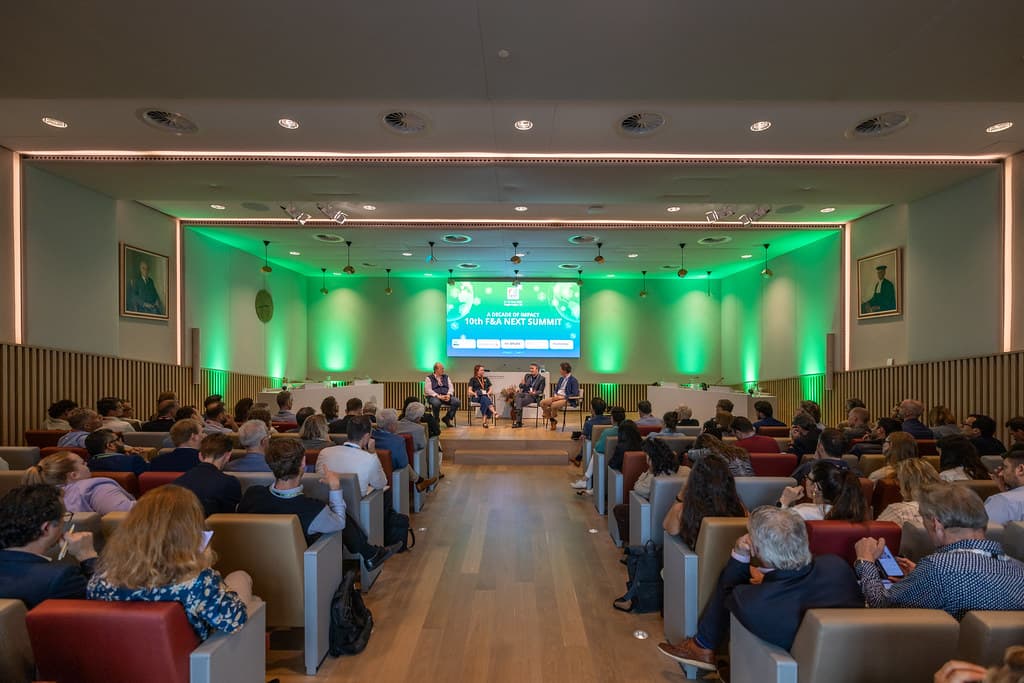From hype to bite: Rethinking alternative protein
After an hype bubble, investment in alternative protein decreased. What is it needed to get to the market more successful products?
Published on June 16, 2025

© F&A Next
Mauro swapped Sardinia for Eindhoven and has been an IO+ editor for 3 years. As a GREEN+ expert, he covers the energy transition with data-driven stories.
In 2021, global investment in agrifood tech startups reached a peak of $56.3 billion. Since then, there has been a significant slowdown. Last year, as reported by venture capital firm AgFunder, only €16 billion was raised. A similar trend can be averted in the alternative protein space, which is also seeing declining funding after the 2021 peak.
As the world's population continues to grow, the need for more sustainable protein sources is as pressing as ever, given the climate footprint of livestock farming. Alternative protein companies are developing new ingredients and products that serve as alternatives or replacements for animal proteins, such as eggs, dairy, or meat. Think, for example, of the cultivated meat burgers of Mosa Meat or Meatable’s cultivated pork.
At the food and agritech summit F&A Next session ‘The Future of Alternative Proteins: Beyond the Hype’, a panel of seasoned experts unpacked the topic. The discussion, moderated by AgFunder’s Head of Media & Research, Louisa Burwood-Taylor, featured Andrew D. Ive, General Managing Partner at Big Idea Ventures, and Alexander Bastos, Head of Front End Innovation, Ventures & Competitive Intelligence at Givaudan. Additionally, Thomas Verswyver, Business Unit Director for Alternative Proteins, Convenience Meals, and Components at Plukon Food Group, joined the debate.
Mistakes made
Stimulated by the moderator to address the mistakes made so far in creating alternative products as new standards, the panelists pointed out several reasons. Ive underlined that many of the options lack one or all of the main aspects consumers look for: taste, texture, and cost. “Curiosity may drive a first purchase, but shifting demand requires products that earn repeat purchases—by consistently delivering on these three key requirements,” he explained.
Bastos emphasized the importance of checking all the boxes of this value proposition. In his opinion, many startups rushed to market with products that were not yet fully developed. “I’ve heard many startups say that, after launching a product to the market, they would release further iterations of that same product. Yet, food doesn’t quite work like an app; if a consumer tastes something and doesn’t like it, getting one to try it again is extremely complicated,” he added.
Bringing his expertise from a food company, Verswyer added that the industry often overlooked fundamental sales and marketing principles. “Successful category building requires a deep understanding of consumer behavior, retail dynamics, and effective shelving strategies,” he said. Many alternative protein companies have failed to effectively guide retailers, resulting in suboptimal product placement and promotion.
Scaling up key technologies
Among the emerging technologies within the alternative protein space are precision fermentation and cultivated meat. Precision fermentation uses bacteria to produce functional ingredients. The microorganisms are engineered to deliver complex proteins or flavors. Cultivated meat is produced in the lab by cultivating animal cells in a controlled environment. It results in meat that is biologically identical to conventional meat, yet without the emissions and the inputs needed for traditional livestock farming.
According to Ive, there is still a lot of work to be done to make them scalable and affordable. Verswyer shared that Plukon chose fermentation-based proteins as an alternative to animal ones. Acknowledging the current hurdles, he predicted that the technology will be cost-competitive within three years.
Givaudan is exploring various platforms, including fermentation, plant-based, and cellular agriculture, investing and partnering with several startups. Nevertheless, to make these solutions scale, he stressed the importance of having trusted and experienced funds. “We want to team up with people who understand this space and can guide these startups forward,” emphasized Bastos. Notably, he also stressed the importance of startups partnering with larger companies to facilitate smoother regulatory approval.

A moment from the talk. From left to right: Burwood Taylor, Bastos, and Verswyer. - © F&A Next
Hybrid products
A way to facilitate the shift towards a more sustainable protein supply is also to push for hybrid meat products. These products’ content is a mix of animal and alternative protein, sourced from either cultivated or plant-based sources.
Verswyer shared that Plukon Food Group is exploring hybrid products as part of its strategy to reduce the environmental impact of meat production. He noted that these products can help retailers meet their sustainability targets while providing consumers with familiar and affordable options.
Valuable investors
Ive also touched upon the hype that characterized the alternative protein market in 2021, focusing on the quality of the investors. “There has certainly been a share of investors who entered this market who were looking for a quick return, without having a clear understanding of its fundamentals and technologies,” he underlined.
“However, those who remained in this space are the ones who actually have a profound knowledge of the technologies involved and their business models,” he added. And those who understand these dynamics can help further develop this space and bring better products to our tables.
Sponsored
This story is the result of a collaboration between F&A Next and our editorial team. IO+ is an independent journalism platform that carefully chooses its partners and only cooperates with companies and institutions that share our mission: spreading the story of innovation. This way we can offer our readers valuable stories that are created according to journalistic guidelines.
Want to know more about how IO+ works with other companies? Click here
